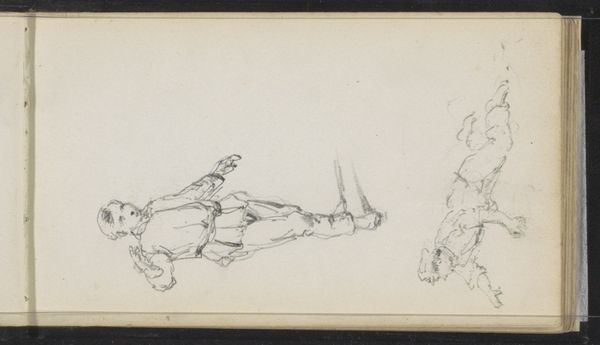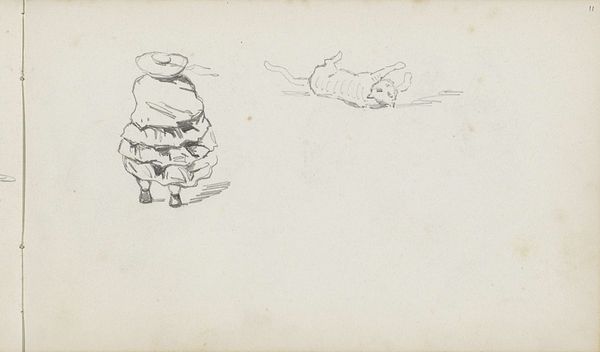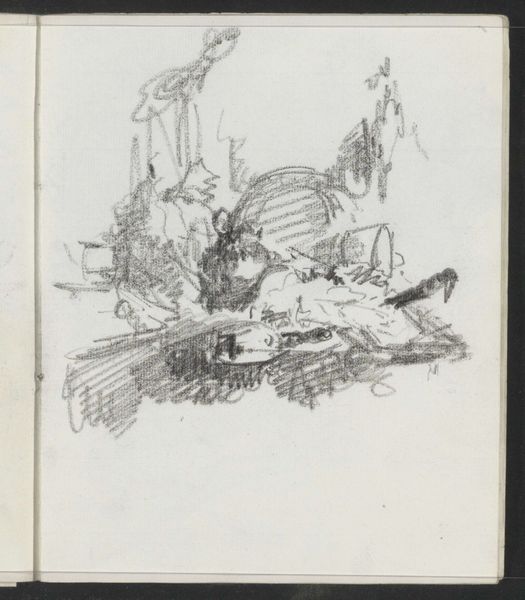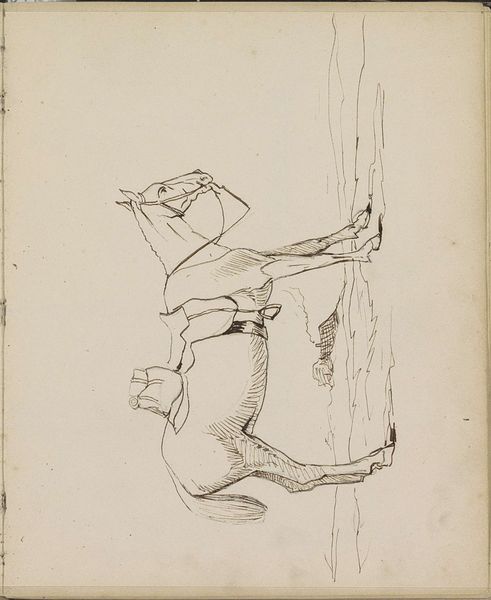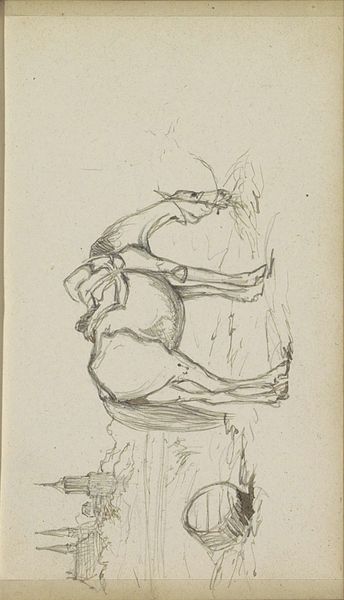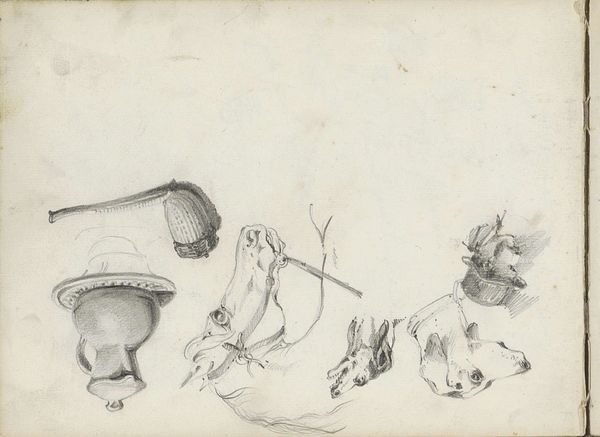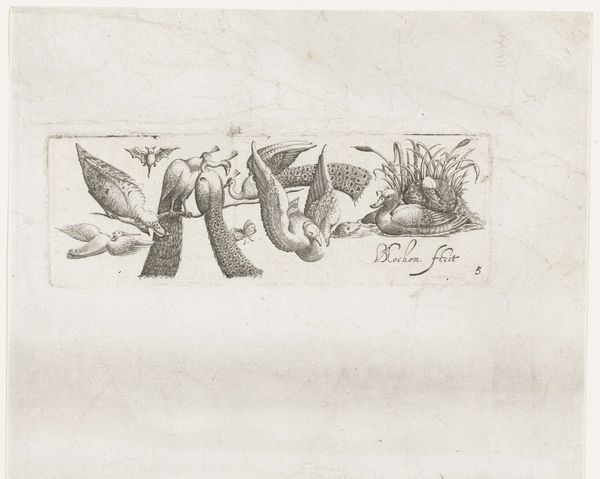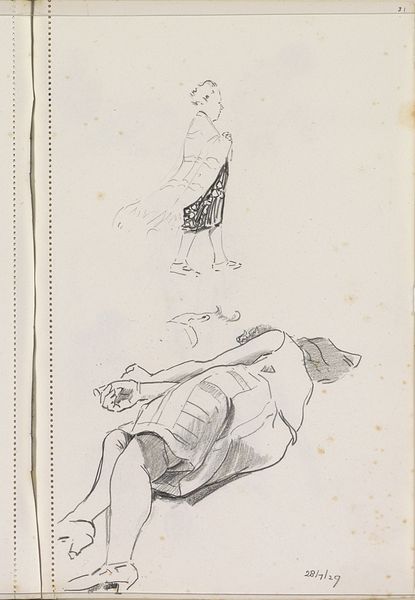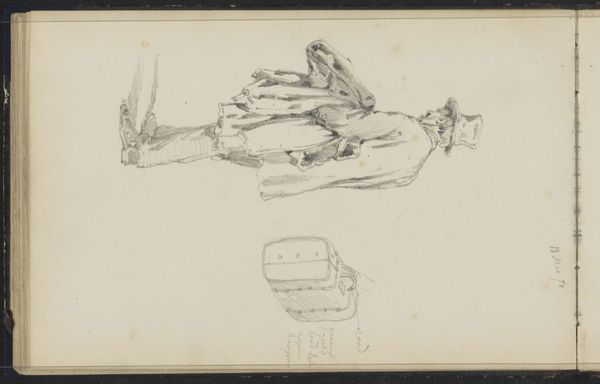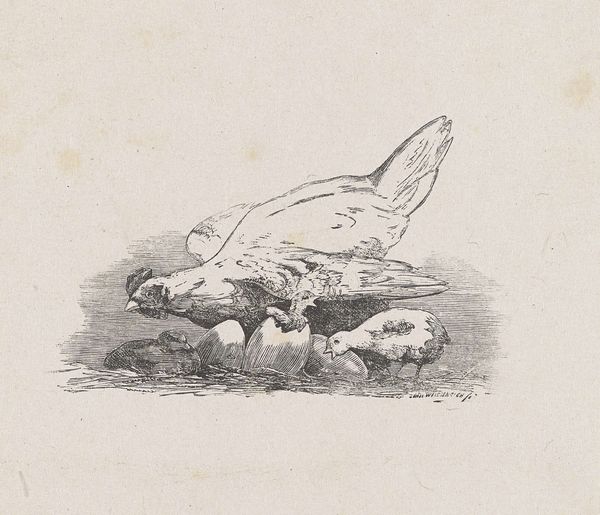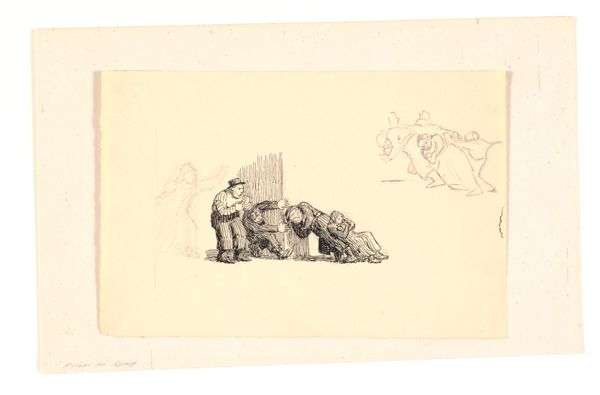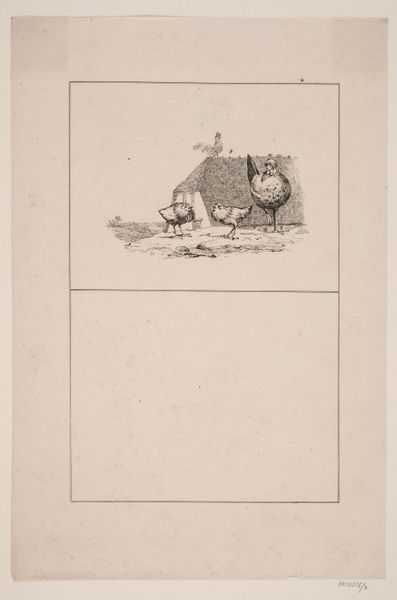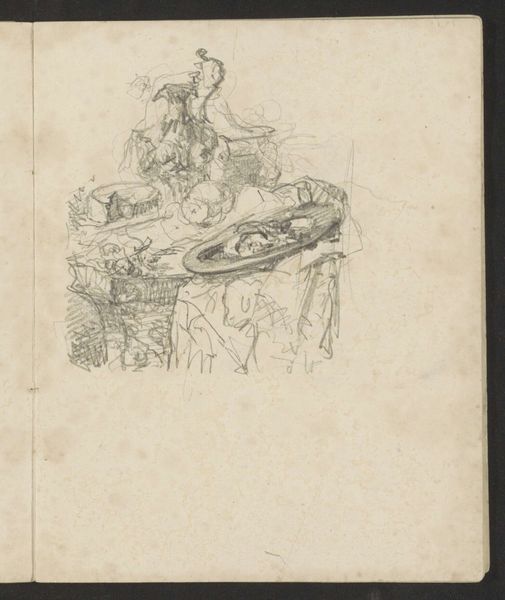
drawing, paper, pencil
#
portrait
#
drawing
#
light pencil work
#
quirky sketch
#
sketch book
#
figuration
#
paper
#
personal sketchbook
#
idea generation sketch
#
sketchwork
#
pen-ink sketch
#
pencil
#
sketchbook drawing
#
genre-painting
#
storyboard and sketchbook work
#
sketchbook art
#
realism
Copyright: Rijks Museum: Open Domain
Editor: Here we have Maria Vos’s "Boy at a Stall Where a Woman is Selling Fish," made in 1858, a pencil drawing on paper currently residing at the Rijksmuseum. The quick strokes and open space give it an airy, unfinished feeling. I’m curious, what do you see when you look at this sketch? Curator: I'm immediately drawn to the context of production here. Vos chose readily available and inexpensive materials—pencil and paper. This suggests the drawing served a preliminary function, perhaps a study for a larger painting or a personal observation. How does this choice of medium reflect the social realities of artists in the 19th century, especially female artists and their access to resources? Editor: That's an interesting point! So, you’re thinking about the practical decisions she made and how that speaks to her position as a working artist? Curator: Exactly. We need to consider the labour involved, the materials used to create both the drawing and the goods being sold. The act of selling fish and creating art share, at a basic level, a connection to physical production and economic exchange. Also consider the distribution channels of artwork, which involved selling them. Where would this drawing have existed initially? Was it displayed for customers alongside other goods for sale? Editor: I hadn't thought of the parallel in the methods of material exchange within the image and beyond it, that's so clever! Do you think the sketch-like quality democratizes the image, blurring the lines between art and everyday life? Curator: Absolutely! By examining the means of production, we can move past idealized notions of artistic genius and instead consider artmaking as a form of labor embedded within a specific social and economic context. Hopefully you can see why even sketches of common scenes can still offer rich insights. Editor: This conversation really highlighted for me how important it is to consider art making as an act of labour intertwined with economics, it has broadened my thinking. Curator: And for me, revisiting the humble sketch reminds me to not take art as being divorced from everyday living.
Comments
No comments
Be the first to comment and join the conversation on the ultimate creative platform.
